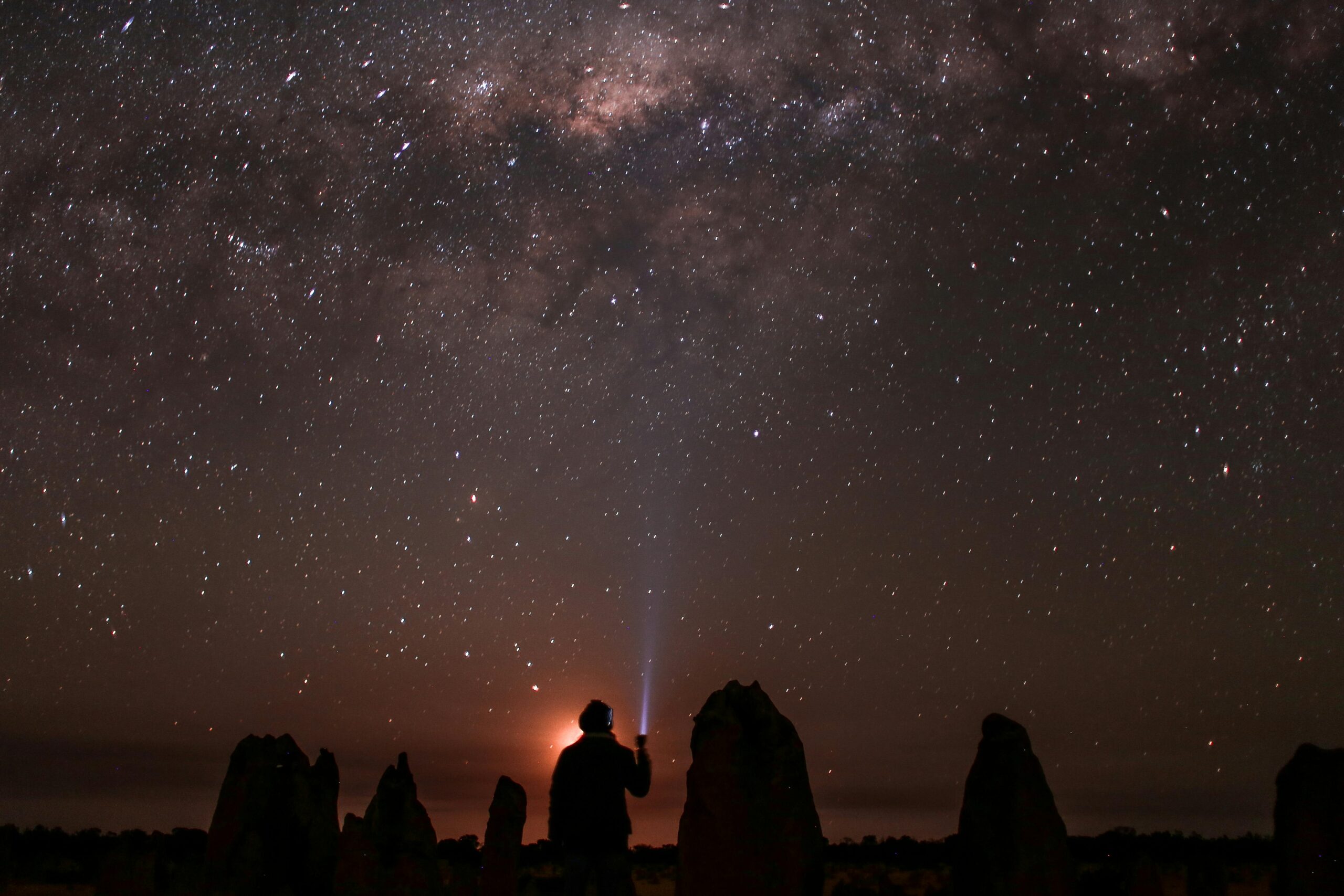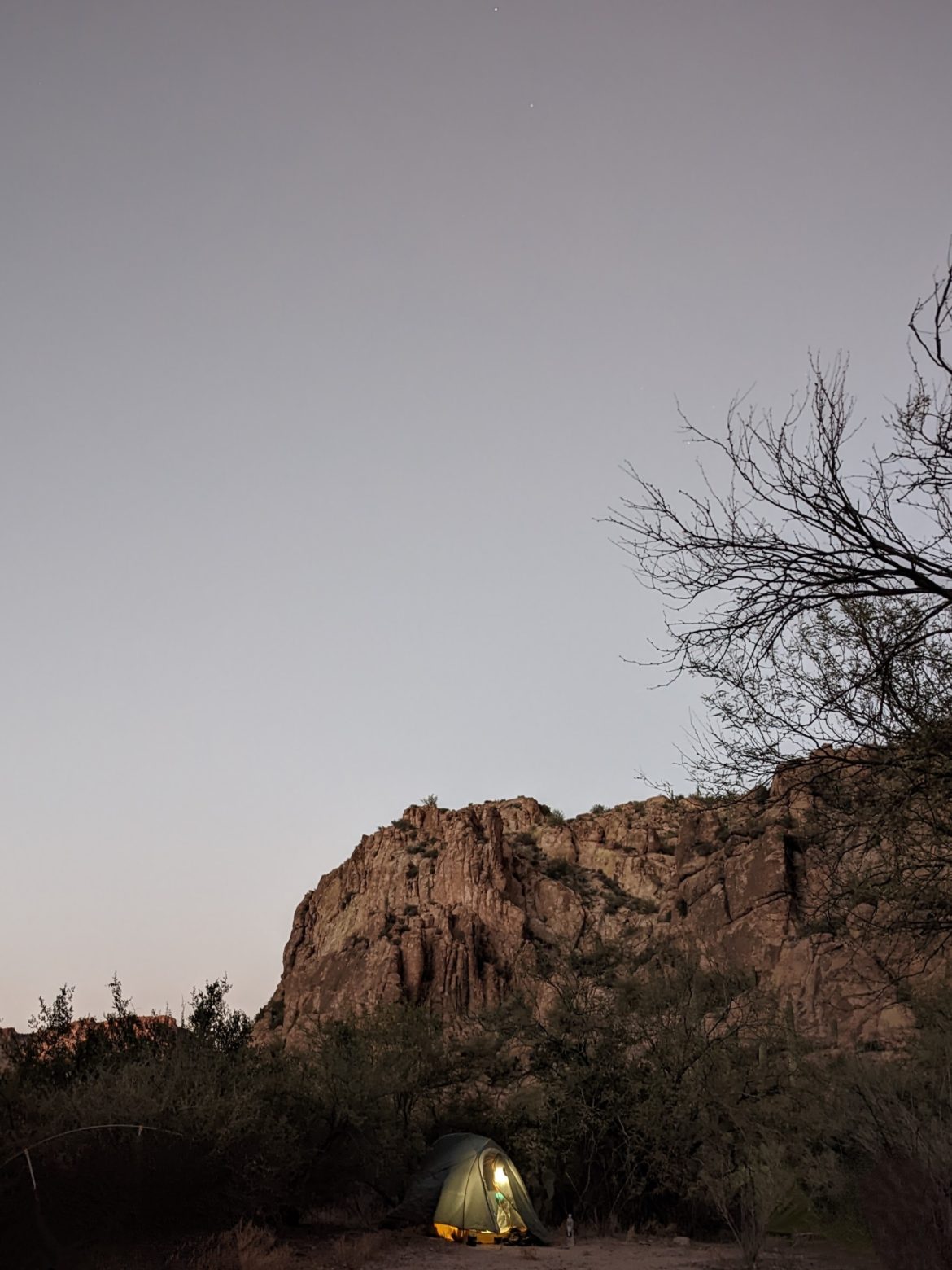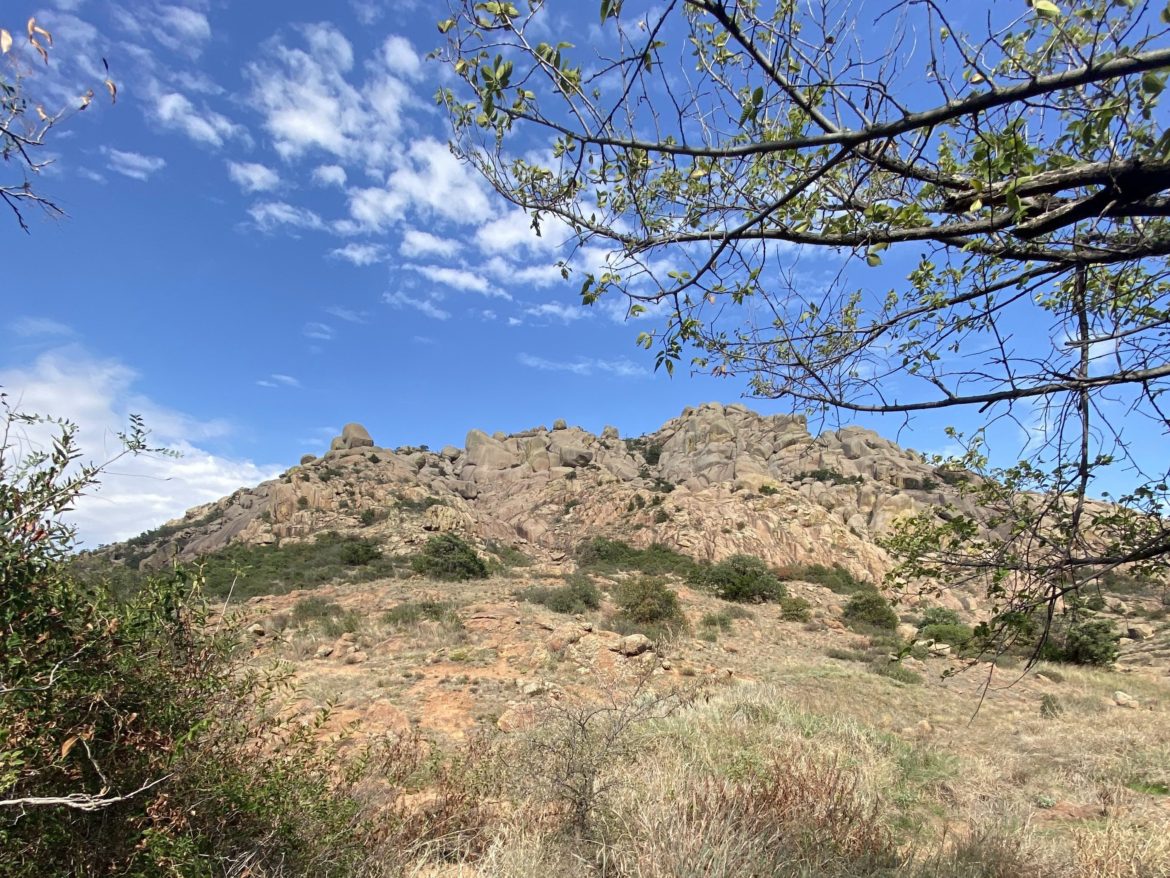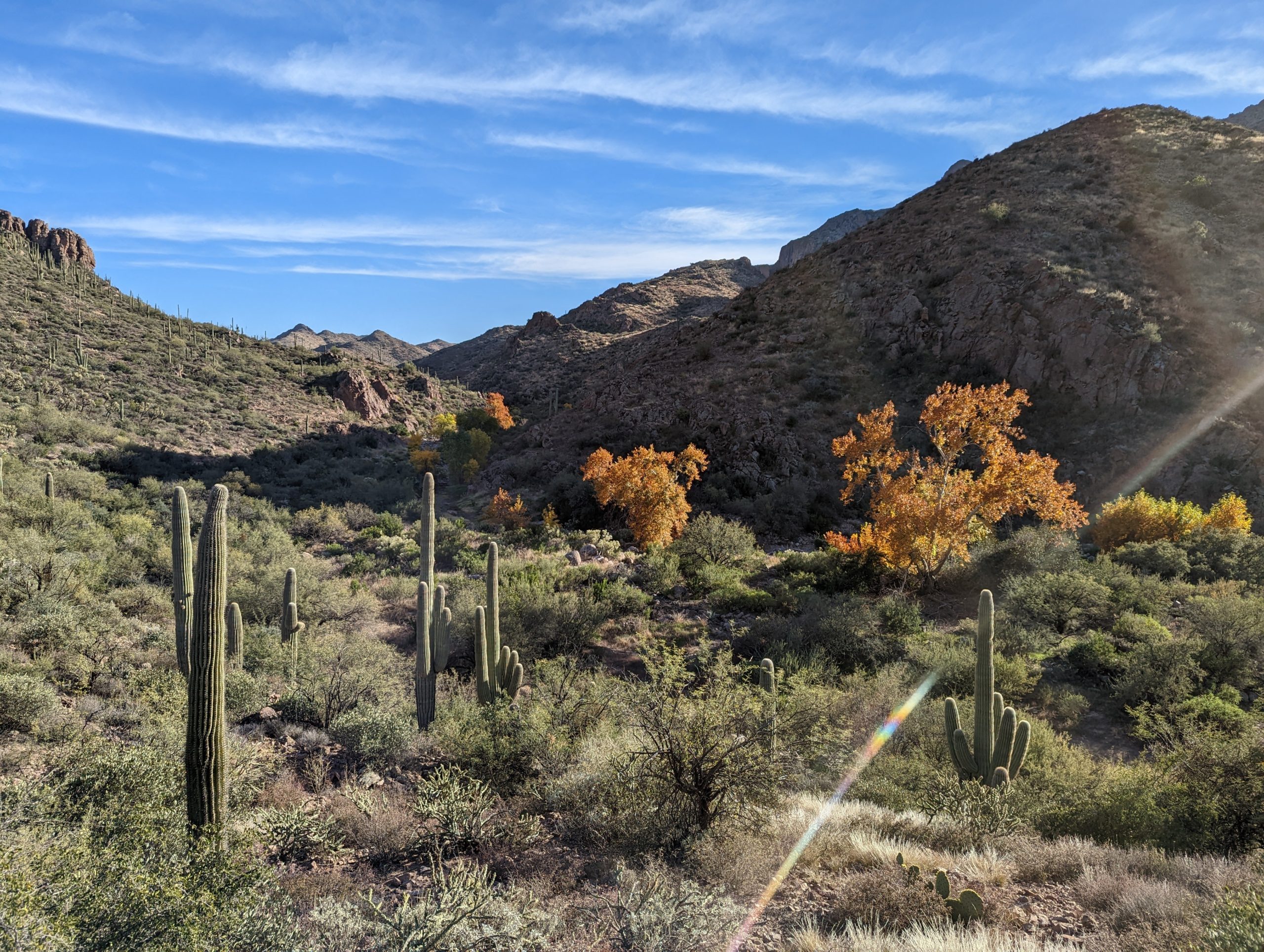Dark sky parks are areas of land that have extremely high-quality starry nights and a healthy nocturnal habitat. Watching the stars in a dark sky park always reminds me of how much light pollution there is across the United States. It’s easy to forget about the stars when they’re barely visible in my hometown. So when I get to camp out in a dark sky park I am always amazed by how easy it is to see the stars (and even a few other planets) above.
What are International Dark Sky Parks?
Dark sky parks are places that the International Dark Sky Places (IDSP) program has certified under five categories. Depending on the qualifications, the IDSP program will designate a space a IDS sanctuary, reserve, park, community, or an Urban Night Sky Place. To qualify as an International Dark Sky Park, the Milky Way must be easy to see without any viewing aids. There must also be no artificial light sources nearby that cause glare, and lighting fixtures that are present must be dim and close to the ground.
To be considered a dark sky park, the land must also be legally protected. There must also be nighttime public access for everyone to have an opportunity to enjoy the dark skies. Lastly, dark sky parks must engage in community outreach activities that educate visitors about dark skies and light pollution throughout the year.
There are more than 122 dark sky parks around the world, and 87 in the United States. 7 of them are in the wide and wonderous state of Texas!
Dark sky parks are popular because they basically guarantee visitors a beautiful view of the night sky. If you visit a certified dark sky park, you know that it will be easy to see the stars. You can even see the Milky Way, given the right weather and time of year. Many stargazers love to visit and practice identifying constellations as well. Because dark sky parks are required to put on educational events throughout the year, many people sign up to enjoy star walks and night sky festivals put on by the park.

Enchanted Rock State Park
Given my experience camping out in Enchanted Rock State Park, I can confirm that the night skies are gorgeous. I cowboy camped just to sleep under the stars, and it was jaw-dropping to be able to see so clearly into the night sky. I just wish my phone could have captured the stars with fidelity!
Enchanted Rock was designated a dark sky park in 2014. Because of its remote location and distance from any major light sources, this park is a fantastic place for stargazing. The park hosts astronomy programs and events throughout the year. Visitors can learn from guides about stars, planets, and other viewable things in our night sky. If you’re able to book a campsite on a clear night, you can admire the stars with a telescope, binoculars, or even your naked eyes.
Milton Reimers Ranch Park
Reimers Ranch was certified as one of the newest dark sky parks in 2021. Located along the Pedernales River, it’s well-known by rock climbers as a fantastic place to climb in Texas. However, astronomy buffs know it for the dozens of programs put on throughout the year at Reimers Observatory. Although this park is only a 45-minute drive from the city of Austin, it is still far enough away to be protected from urban light pollution.
Before being designated, the Reimers Ranch staff implemented Dark Sky Approved lighting in the park and the area around it. The goal of implementing special lighting is to minimize the effect of human life on nocturnal wildlife within the park and also create a space where the night sky is easy to see and admire.

Lyndon B. Johnson National Historic Park
Located just 45 minutes southwest of Reimers Ranch Park, Lyndon B. Johnson National Historic Park also runs along the Pedernales River. The park’s name comes from the fact that the president spent over 1/4 of his presidency at LBJ Ranch (located within the park).
Designated in 2021, this park contains a ton of history about Lyndon B. Johnson and his life before becoming president. His childhood home is available to tour there throughout the year, and there is an LBJ Ranch driving tour as well. You can also visit the Texas White House Complex within the park. After the sun sets, you can enjoy the view that all dark sky parks are famous for. There are many astronomy-based programs available throughout the year at LBJ National Historic Park.
Devils River State Natural Area
Designated in 2019, Devils River State Natural Area was the first official dark sky sanctuary in Texas. Typically, dark sky sanctuaries are more isolated and less suitable for public events than dark sky parks. However, that also means they are darker and require even more effort to maintain its dark skies.
The skies in Devils River SNA are dark enough to see the Milky Way and is rated a 2 out of 9 on the Bortle Dark-Sky Scale (with 1 being the darkest). To visit this area, you can drive four hours from San Antonio or five hours from Austin. Aside from stargazing, you can also go swimming, fishing, and paddling in the river. There are trails to hike or bike on land, and a ton of nature-watching opportunities. It’s also ideal to camp inside of the park so you can stargaze freely.

South Llano River State Park
Stargazing is the most important activity at South Llano River SP, and they have TONS of activities to show it. The state park has an entire list of free stargazing resources to help you plan for your visit. You can even keep track of the current dark sky measurements within the park on their dark sky monitor webpage. They have a calendar showing all upcoming events – and there’s usually two or three events every weekend. From “Star Chart 101!” to a “Star Party in the Canyons!”, the rangers go above and beyond to make your visit worthwhile.
Designated in 2017, South Llano River State Park is a three-hour drive from Austin and just two hours from San Antonio. Don’t hesitate to book a campsite so you can make the most of your time under the beautiful skies!
Copper Breaks State Park
Named after the copper deposits found throughout the area, Copper Breaks State Park ranks at level 2 on the Bortle Scale. It was designated a dark sky park in 2014 and takes up about three square miles in North Texas. You can drive there in three and a half hours from Dallas and only two and a half hours from Lubbock.
Although Copper Breaks is fairly small, there is a long list of activities you can enjoy there. If your main goal is to view the stars, I’d advise booking an overnight campsite and hiking the Dark Sky Trail as the sun sets. During the day you can go boating , horseback riding, mountain biking, and fishing.

Big Bend Dark Sky Reserve
Finally – a national park!! Don’t get me wrong, I love visiting all of Texas’ state parks. But there’s something about the history and scale of national parks that fills my heart with happiness. Big Bend National Park is one of two national parks in Texas, but it’s the only national park on this list (sorry, Guadalupe Mountains).
Technically, the scope of the Dark Sky Reserve expands wayyy past the national park, which is amazing. In fact, it is the largest dark sky certified place in the world, spanning from Reeves County, Texas all the way down to Ocampo, Mexico. The land in Big Bend National Park only makes up about one fourth of the entire dark sky preserve. It’s impossible to cover the entire area in just one visit. However, no matter how long you have to explore, don’t forget to look up and enjoy the skies as well.




